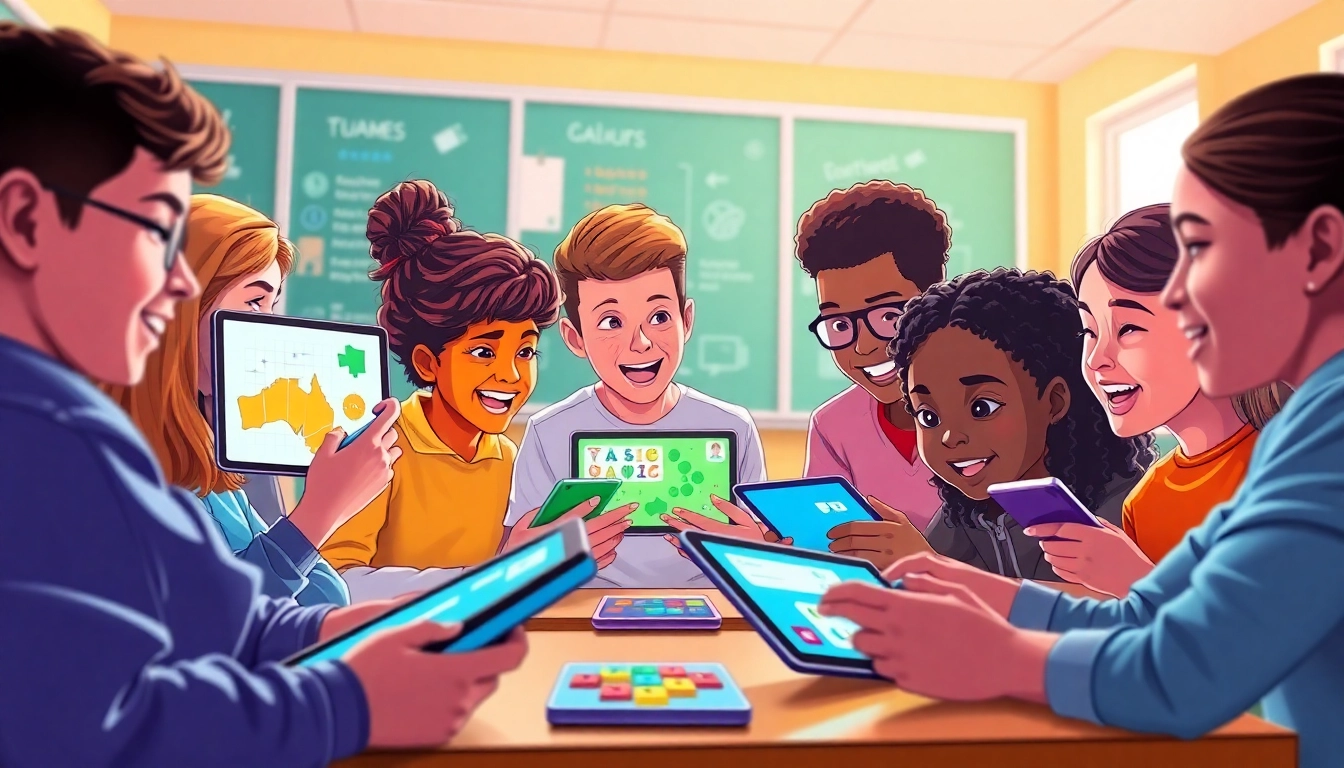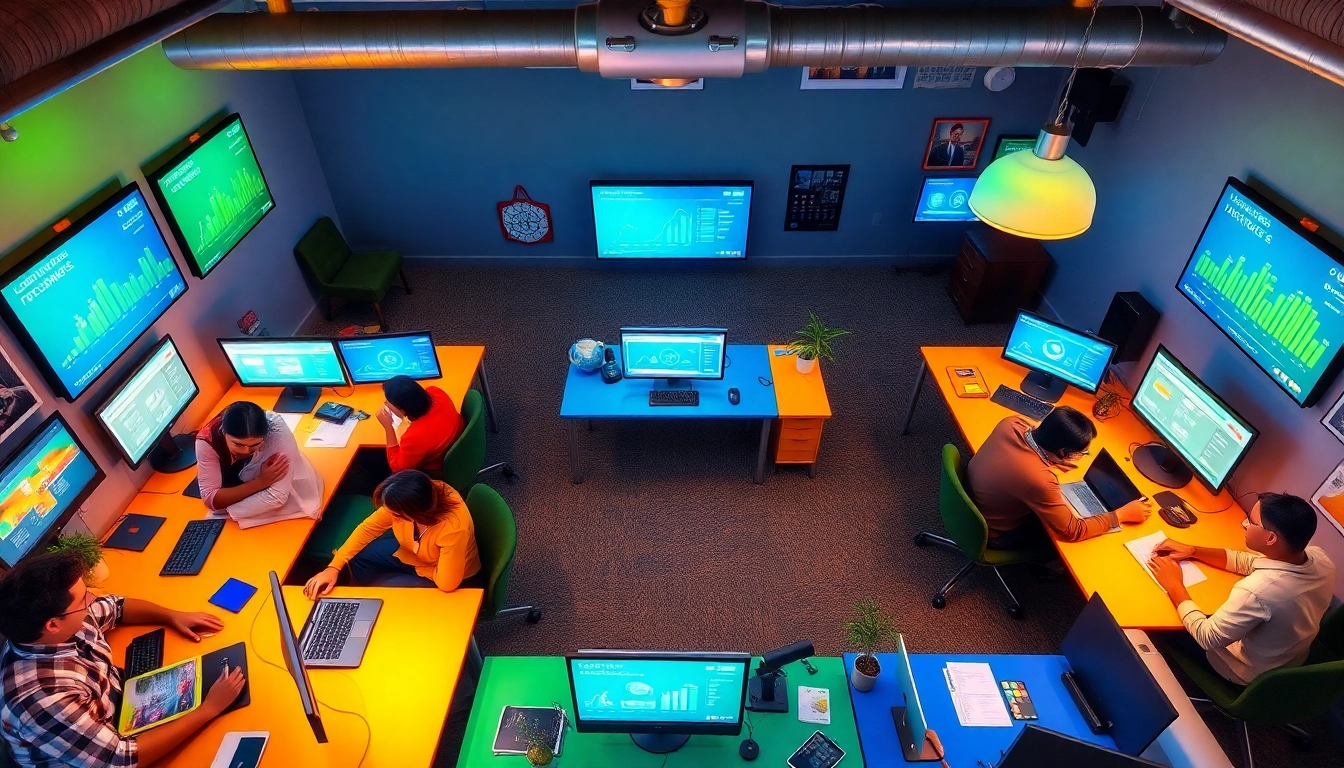Understanding Educational Gamification
Definition and Importance
Educational gamification is the integration of game elements into learning environments to boost engagement, motivation, and retention of information. By incorporating aspects such as rewards, challenges, and interactive activities, educators can transform traditional learning experiences into dynamic and enjoyable ones. The importance of educational gamification lies in its ability to appeal to diverse learning styles and promote a deeper understanding of complex subjects. It aligns educational objectives with the evolving expectations of students who now grow up in a digital-centric world.
Key Benefits for Learning Environments
Gamification in educational settings offers numerous advantages:
- Enhanced Engagement: Games naturally attract attention, fostering a more involved classroom atmosphere.
- Motivation: Intrinsic motivation is heightened through game mechanics such as points, badges, and leaderboards, encouraging students to strive for excellence.
- Immediate Feedback: Gamified assessments provide instant feedback, allowing learners to identify and correct mistakes quickly.
- Skill Development: Through challenges and problem-solving tasks, students develop critical thinking and teamwork skills.
- Personalization: Different game levels or paths allow for tailored learning experiences based on individual student needs.
How It Works: Basic Principles
The effectiveness of educational gamification is grounded in several core principles:
- Autonomy: Students are given choices that enhance ownership of their learning.
- Progression: Progress through levels or stages, which keeps learners motivated and allows for mastery of content.
- Rewards: Implementing rewards for achievements fosters a sense of accomplishment.
- Collaboration: Many gamified systems promote teamwork, encouraging students to work together towards common goals.
- Storytelling: Incorporating narratives makes learning more relatable and immersive.
Challenges in Implementing Gamification
Common Obstacles Educators Face
While the advantages of gamification are substantial, educators often encounter several challenges during implementation:
- Lack of Resources: Some educators may find themselves with limited resources, such as time, technology, or training, which hinders gamification efforts.
- Resistance to Change: Traditional teaching methods are deeply ingrained, and some educators may struggle to embrace a gamified approach.
- Assessment Difficulties: Measuring learning outcomes in gamified systems can be complex and may require new evaluation methods.
Technical Limitations and Solutions
Technical challenges also pose a significant barrier:
- Software Familiarity: Educators may be unfamiliar with game design software or platforms. Providing training and support is essential for overcoming this obstacle.
- Access to Technology: Limited access to devices can hinder student participation. Schools should aim to implement gamification in a way that is accessible for all students, perhaps by using mobile-responsive platforms.
- Integration with Existing Curriculum: Aligning gamified elements with standardized curricula could be complicated. Educators should take a phased approach, integrating gamification into existing structures gradually.
Overcoming Resistance from Students
Students may be hesitant to engage with gamified learning environments, particularly if they are accustomed to traditional methods. Educators can address this through:
- Encouraging Involvement: Involve students in the design process, allowing them to contribute their perspectives and preferences.
- Demonstrating Benefits: Clearly communicate the value of gamified learning, emphasizing how it can make subjects more enjoyable and relevant.
- Starting Small: Implementing gamification in small doses allows students to adjust without feeling overwhelmed by changes.
Best Practices for Successful Gamification
Designing Engaging Educational Games
To ensure the success of gamification strategies, educators should consider the following best practices:
- Understand Your Audience: Recognize the interests and backgrounds of your students to make games appealing to various demographics.
- Create Clear Objectives: Define what students should achieve through game mechanics, ensuring that educational goals remain the focal point of gameplay.
- Iterate and Improve: Seek feedback from students and be willing to refine game elements to improve the learning experience continuously.
Integrating Gamification into Curriculum
Integrating gamification requires a strategic connection to the curriculum. Here’s how:
- Link with Learning Objectives: Ensure that gamified activities support specific learning outcomes established in the curriculum.
- Design Flexible Structures: Create a versatile framework for gamified elements that can evolve based on student performance and feedback.
- Apply Across Disciplines: Consider gamification in various subject areas, as inter-disciplinary approaches can reinforce learning and skills.
Measuring Success and Engagement
Effective measurement is vital to ensure that gamification meets its intended objectives. Educators should:
- Track Progress: Use tools and analytics to monitor student progression through gamified learning systems.
- Conduct Surveys: Regular student feedback will provide insights into engagement levels, helping educators refine their strategies.
- Evaluate Learning Outcomes: Assess student performance through both traditional methods and gamified assessments to determine effectiveness.
Innovative Examples of Educational Gamification
Case Studies of Successful Implementations
There are numerous cases of successful educational gamification worldwide, such as:
- Kahoot!: This platform allows teachers to create quizzes that students can engage with via their devices. Its interactive nature encourages participation and collaboration.
- Duolingo: Gamifying language learning through bite-sized lessons accompanied by immediate feedback, rewarding users with points and achievements to maintain their motivation.
- Classcraft: Combining elements of role-playing games with classroom behavior management, this platform engages students by turning classroom participation into a game.
Popular Platforms and Apps
Several platforms have emerged to provide gamification solutions specifically for educational settings, including:
- Edmodo: Focused on communication and collaboration, it integrates gamification in discussions and assignments.
- Quizizz: Offers a gamified learning experience, allowing students to participate in quizzes and earn rewards.
- Nearpod: Engages students with interactive lessons and incorporates gamified assessments throughout.
Lessons Learned from Real-World Applications
Successful implementations of gamification reveal critical lessons:
- Customization is Key: Tailoring gamified experiences to specific student groups fosters a sense of agency and belonging.
- Simulations Yield Infinite Learning: Real-world simulations create relevant learning experiences, deepening understanding and retention.
- Community Building Enhances Experience: encouragement of peer-led initiatives promotes collaboration among students and can enhance the learning experience.
Future Trends in Educational Gamification
Emerging Technologies and Their Impact
The future of educational gamification will likely be influenced by emerging technologies such as:
- Artificial Intelligence: AI can analyze student data, enabling personalized learning experiences that adapt to individual needs.
- Virtual Reality (VR): VR can provide immersive environments for learning, making complex subjects like science or history come alive.
- Augmented Reality (AR): AR incorporates digital elements into the real-world learning experience, facilitating engagement and interaction.
Predictions for the Next Five Years
In the next five years, we can expect:
- Increased Integration: Schools will likely see a greater integration of gamification into core curricula, with standardized frameworks for implementation.
- Greater Accessibility: Gamification technologies will become more affordable and accessible to institutions, bridging gaps in educational disparities.
- Focus on Social-Emotional Learning: Games designed to foster social-emotional skills will increasingly complement academic learning.
How to Stay Ahead in Educational Innovations
Staying ahead in educational innovations involves:
- Continuous Professional Development: Educators should seek ongoing training in gamification and related technologies.
- Networking with Peers: Joining educator communities focused on gamification can provide support and share best practices.
- Commitment to Research: Keeping abreast of the latest studies and findings on gamification’s educational impact to implement based on solid evidence.






Leave a Reply